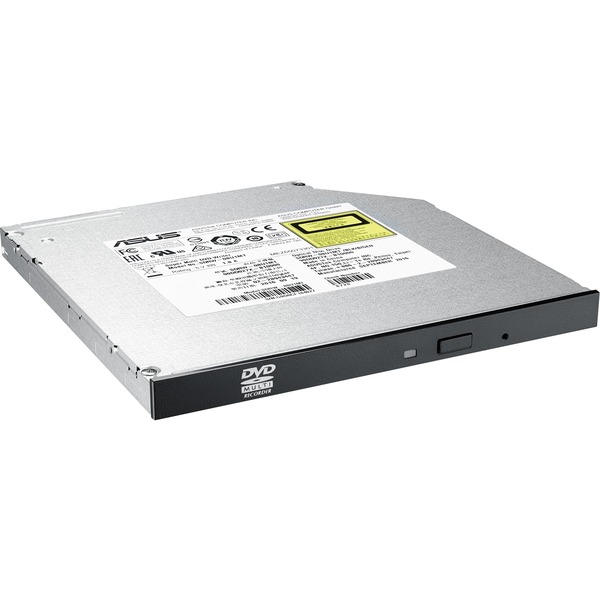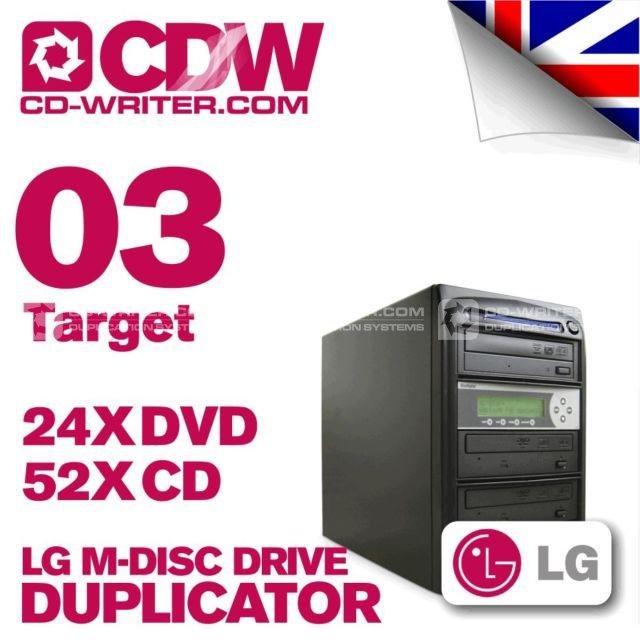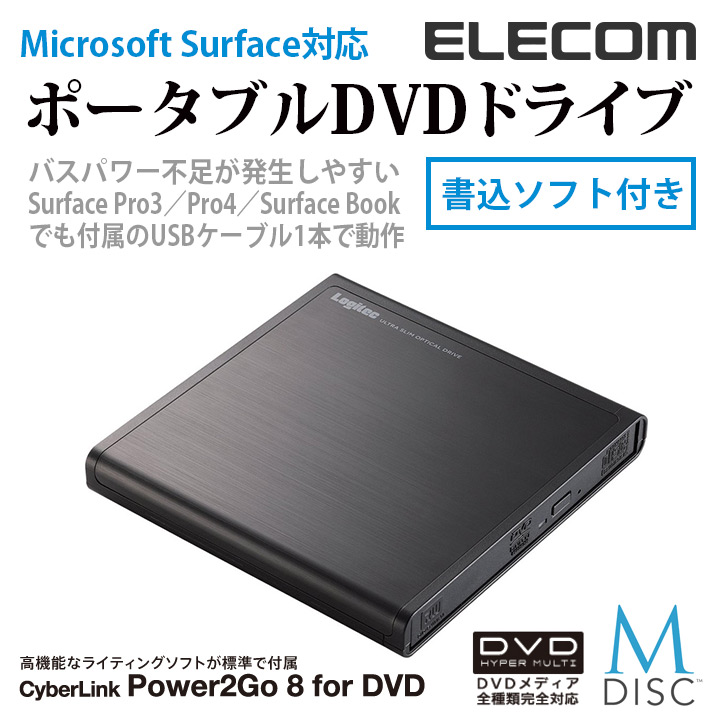The BDR-211 is a nice drive but it doesn't assist M-Disc and, appropriate, it will not work with DeUHD. So, it might be a nice UHD drive however not assist M-Disc and won't work in any respect with DeUHD.
The SE-506CB.RSBD burned flawlessly, so I took the discs it created and tried to read them utilizing each drive I may find. M-Disc says its recordable DVDs should be readable in ninety % of the DVD drives put in, or being bought now. I didn’t hit 90 percent, but although recognition could possibly be sluggish, the vast majority of the drives I tested read M-Disc just fine. See the table under.
That leaves LG. I've preferred Pioneer with respect to Blu-ray however I always had good luck with LG DVD drives and even my LG HD-DVD drive.
I put both discs exterior in Feb. 2016 (this yr) and purchased them back in right now Sep. 2016. They have seen temperatures below freezing, above 80 degrees F, and have been subjected to hail stones, plant scratches, being partially buried in soil, and all types of disturbances with none protection in any respect. Here's a picture of them taken this summer. The one with the white label is the M-Disc.
And unavailable when communications methods are down. You don’t know who has entry to the data, and you don’t understand how well the info heart is backed up. Because the media is dear and never as capacious as a tough drive, you’ll have to choose what’s really important and perhaps divvy it up throughout discs. You might view this as a chance to scrub home or a deal-buster. ISO/IEC 16963 normal longevity tests have proven the sturdiness of M DISC technology, and it withstood rigorous testing by the US Department of Defense.
(MillennialDISC) A recordable (write once) DVD and Blu-ray medium from MDISC, American Fork, Utah (www.mdisc.com). Introduced in 2009, MDISCs are used for archival storage that lasts for centuries. Rather than using a dye layer, the data are etched into the MDISC's inorganic recording layer. All Blu-ray drives and newer DVD drives are MDISC-compliant for recording, but all common BD/DVD gamers can learn them.
Department of Defense Naval Air Warfare Weapons Division facility at China Lake, California examined a variety of storage codecs [pdf] for their vulnerability to excessive mild, heat, and humidity, and only the M-DISC remained undamaged after the 26.25-hour testing interval. Is this true? Without launching a FOIA request, I cannot find any supply for this claim apart from M-DISC producers themselves and expertise journalists who appear to be parroting M-DISC manufacturers. Furthermore, the "1,000 years" declare solely seems to apply to the original 4.7GB M-DISC, not to business-branded 25+ GB variations. Only optical media is durable enough to guard your most precious digital recordsdata and recollections for the long run and Verbatim MDISC is the most durable of all.
Conventional DVD-R and BD-R LTH (Low To High) use recording layers of natural dye and separate reflective layers. Standard (HTL) BD-R and BD-R/DL (besides LTH BD-R) typically use inorganic knowledge layers, but proceed using a reflective layer.
Developer Millenniata claims that M-DISC makes use of a "glassy carbon" knowledge layer which is kind of like chiseling your knowledge into stone. (Of course, even stone tablets aren't immune to information rot.) M-DISCs are costly, going for around $three US each for the 4.7GB DVD discs, and so they aren't suitable with all players. As with different Blu-Ray codecs, M-DISCs are available in 25, 50, and 100GB versions as properly.
LG, ASUS, and Lite-On have sold M-Disc succesful drives. No idea on the most recent fashions to help it from each company.
M-DISC uses a single inorganic recording layer, which is considerably inert to oxygen, however requires a higher-powered laser. M-DISC DVD does not require the reflective layer. Thus, both the M-DISC and inorganic BD-R bodily alter the recording layer, by burning or etching a permanent hole within the materials, somewhat than altering the color of a dye. Besides bodily damage, failure of the reflective layer, followed closely by degradation of the information layer, are the primary failure modes of all optically recordable disks. LG Electronics, ASUS and Lite-On produce drives that may record M-DISC media.
Verbatim MDISC recordable 25 gigabyte discs are a favorite of skilled photographers, videographers, and residential users which have a large amount of data to archive. MDISC Blu-ray discs are appropriate with any Blu-ray author. MDISC Blu-Ray insures that when-in-a-lifetime photograph, video, or special moment, might be preserved in pristine situation on your lifetime, and past. The M-DISC is the first PERMANENT STORAGE SOLUTION, which implies it's designed particularly to retailer your data for a really very very long time. Actually a thousand years.
Films take up lots of file area and maintaining an edited grasp requires a minimal of 25 Gigabytes of knowledge area. This equates to a Blue-Ray disc, single sided. The finest methods utilized by data centres involve exploiting Raid expertise the place knowledge is written throughout two or more drives so any failure of a single drive means it may be changed (the drive) and the information copied again from the remaining working drive. For the home consumer, the method is to repeat off entire drives to new ones each few years.

Optical Media

In first DVD and Blu-ray M-Discs there was difficulty distinguishing the writable side of the disc, so that they added color to differentiate the sides and make it look like the coloring on standard DVD or Blu-ray media. The emblem on the front of an optical burner is actually just for M-Disc DVDs, after which just for writing, as many non-logo drives will learn it simply nice. Laser power must be increased past that usually used with CD/DVD R/RW to ablate the data layer in M-Disc DVDs, so suitable firmware must be in place. Older drives could possibly be upgraded for writing, but as there’s little financial incentive, don’t maintain your breath. Recorded discs are readable in typical drives.
M-Disc launched 4.7GB DVD discs, which are suitable for archiving paperwork and perhaps your most treasured photographs, last year. For video or different bigger recordsdata, the lately launched 25GB and 100GB BD-R, in addition to the quickly-to-be-released (Q3) 50GB BD-R discs should care for enterprise. As BD-R HTL was part of the Blu-ray normal, and M-Disc features a lot the identical way, any BD burner is bodily able to writing M-Disc BD media.
People consider DVDs and Blue Ray discs will retain their data for lengthy periods of time. What most do not know is that these discs are fragile and information on them is well corrupted and destroyed, with many poorly made ones breaking down because of unstable chemistry after a couple of years. It's highly probably that even National Archival institutes like The British Library are tearing their hair out trying to determine sturdy strategies for storing their paperwork, books, and references. Online archiving is certainly an possibility, however even within the age of ubiquitous broadband, online storage is comparatively gradual, even slower than optical in many instances. And relatively expensive.
The BDR-211 is a nice drive but it does not assist M-Disc and, right, it won't work with DeUHD. So, it might be a nice UHD drive however not help M-Disc and will not work at all with DeUHD.
Yikes. The comparative delicacy of the polycarbonate outer layer of the disc is why the media lasts “solely†a thousand years.
Tape stretches and is also magnetically weak. NAND received’t final endlessly, as a result of cells leak and finally fail. That leaves M-Disc trying fairly good within the media preservation, aka archiving function. I think the larger concern is having the ability to learn an optical disc in 50 years.
M-DISC's design is meant to offer greater archival media longevity. Millenniata claims that properly stored M-DISC DVD recordings will final one thousand years. While the precise properties of M-DISC are a commerce secret, the patents defending the M-DISC know-how assert that the information layer is a "glassy carbon" and that the fabric is substantially inert to oxidation and has a melting level between 200° and 1000 °C.
Some of the DVD players from reputable gamers that carry the phrases "M disk assist" aren't on the listing on the M Disc website you linked to, but I guess they need to be fantastic for writing/studying M disk DVDs, as opposed to the M disk blu-ray gamers that enable quite vast storage per disk. This is simply one of many positions I positioned them in and I alternated their faces so typically the information aspect was going through out sunwards and generally not.
It is totally destroyed. The daylight has generated temperatures greater than the silver information layer to withstand, causing it to crack, expand and break off the substrate. The one on the best is the M-Disc.
Based on ISO/IEC 16963 testing, M DISC media has a projected lifetime of several hundred years. Technology is playing an increasingly necessary role in every facet of our lives. Every day we create increasingly digital memories which are saved on good telephones, computers, hard drives, social media and cloud accounts. We all have digital files that are just too necessary to lose; pictures of our wedding ceremony, movies our children walking for the first time or our business accounts and tax returns. But most individuals give little thought to how everlasting these digital information are, or the unthinkable consequences of dropping them.
As for M-DISC, the one resolution is to have your self cryogenically frozen. 1,000 years from now, assuming the planet hasn't been nuked into a lump of carbon, you possibly can have your self revived, pull out the M-DISCs and reader you cleverly saved in your hermetic chamber, and check your discs if they haven't all disintegrated. Then you can obtain no matter time-journey system is currently trendy, return to the current, and inform us of the outcomes. We'd love to hear it, and whilst you're at it, deliver me the following 20 Super Bowl winners. Allegedly, the U.S.
M-Disc optical media reviewed: Your knowledge, good for navigate here a thousand years
People consider DVDs and Blue Ray discs will retain their knowledge for long durations of time. What most don't know is that these discs are fragile and data on them is easily corrupted and destroyed, with many poorly made ones breaking down due to unstable chemistry after a number of years. It's extremely doubtless that even National Archival institutes like The British Library are tearing their hair out attempting to establish sturdy methods for storing their paperwork, books, and references. Online archiving is certainly an possibility, but even in the age of ubiquitous broadband, on-line storage is comparatively sluggish, even slower than optical in many circumstances. And relatively expensive.
Conventional DVD-R and BD-R LTH (Low To High) use recording layers of natural dye and separate reflective layers. Standard (HTL) BD-R and BD-R/DL (besides LTH BD-R) sometimes use inorganic knowledge layers, however continue utilizing a reflective layer.
I half buried them for 2 months in soil as nicely for good measure. Here's how they looked today when I retrieved them. The one on the left is the odd Blueray.
Apart from a dirty surface, it in any other case appears intact. Microscopists, like photographers, and film makers are excited about preserving recorded imagery. I'm additionally a film maker and with several characteristic movies accomplished, I am concerned at how I keep the masters for long term safety without dropping the material.
Via the www.mdisc.com and www.yours.co websites, customers can have their cloud photographs recorded on MDISC media to ensure that valuable photographs may be passed down to future generations. See worm. Recorded discs are readable in typical drives. Available recording capacities are much like other optical media from four.7GB DVD-R to 25GB, 50GB BD-R and 100GB BD-XL.
Based on ISO/IEC 16963 testing, M DISC media has a projected lifetime of several hundred years. Technology is enjoying an increasingly essential role in every aspect of our lives. Every day we create more and more digital reminiscences that are saved on smart phones, computer systems, exhausting drives, social media and cloud accounts. We all have digital information that are simply too necessary to lose; photographs of our wedding, movies our children walking for the primary time or our business accounts and tax returns. But most people give little thought to how permanent these digital information are, or the unthinkable consequences of shedding them.
(MillennialDISC) A recordable (write as soon as) DVD and Blu-ray medium from MDISC, American Fork, Utah (www.mdisc.com). Introduced in 2009, MDISCs are used for archival storage that lasts for hundreds of years. Rather than employing a dye layer, the info are etched into the MDISC's inorganic recording layer. All Blu-ray drives and newer DVD drives are MDISC-compliant for recording, but all common BD/DVD players can read them.
You're done with optical discs as a way of knowledge and media supply, or soon might be. But when done right, because it has been with Millenniata's M-Disc, optical has a specific advantage—longevity. Hard disk mechanisms fail, and the information stored on them may be erased by magnetic fields.
The creation of comparatively unstable, dye-based CD/DVD recordable and rewritable, in addition to the dearth of quality requirements governing them, caused many customers to overlook that pressed optical discs are very long-lived. CDs from the eighty’s and 90’s ought to nonetheless play fine, assuming you haven’t scratched them up. Same deal with DVD and Blu-ray strikes, which are manufactured equally.
Developer Millenniata claims that M-DISC makes use of a "glassy carbon" information layer which is type of like chiseling your data into stone. (Of course, even stone tablets aren't resistant to data rot.) M-DISCs are expensive, going for round $3 US every for the four.7GB DVD discs, they usually aren't appropriate with all players. As with different Blu-Ray formats, M-DISCs can be found in 25, 50, and 100GB versions as well.
I see no cause why that would not proceed with Blu-ray and UHD. The critiques for such LG drives have remained consistently good.
Available recording capacities are just like other optical media from four.7 GB DVD-R to 25 GB, 50 GB BD-R and a hundred GB BD-XL. Due to their translucency (lack of a reflective layer), the primary DVD M-DISCs had difficulty distinguishing the writable facet of the disc, so shade was added to distinguish the edges and make it seem like the coloring on normal DVD media. I happened to do a quick read on M-Disc.

Optical is dead. visit our website Long have a peek at this website stay optical.

Who will still be making optical drives? (Hopefully a partnership with LG and M-Disc?) They may turn out to be very expensive.
Now massive firms, data libraries, universities, and residential users all have entry to large capability on a single instrument. With tri-layer know-how, one hundred gigabyte discs require a BD-XL Blu-ray author to engrave successfully. The solely failure point for the fabric used within the M-Disc data layer is oxidation, which, in accordance with Millenniata materials scientists, shouldn’t be a difficulty for about ten millennia.
Tape stretches and can also be magnetically weak. NAND won’t last eternally, as a result of cells leak and eventually fail. That leaves M-Disc trying pretty good within the media preservation, aka archiving role. I suppose the greater concern is with the ability to read an optical disc in 50 years.
Via the www.mdisc.com and www.yours.co web sites, customers can have their cloud pictures recorded on MDISC media to ensure that valuable photos can be handed right down to future generations. See worm. Recorded discs are readable in typical drives. Available recording capacities are much like different optical media from 4.7GB DVD-R to 25GB, 50GB BD-R and 100GB BD-XL.
The BH16NS40 might be able to learn UHD discs however it isn't an actual UHD drive meaning it lacks the required hardware, and so forth, for AACS 2.zero and such. It can read and burn to BD (SL, DL, TL, QL) but that does not make it a UHD drive.
It is totally destroyed. The daylight has generated temperatures higher than the silver knowledge layer to face up to, inflicting it to crack, increase and break off the substrate. The one on the right is the M-Disc.
Available recording capacities are similar to other optical media from 4.7 GB DVD-R to 25 GB, 50 GB BD-R and one hundred GB BD-XL. Due to their translucency (lack of a reflective layer), the primary DVD M-DISCs had difficulty distinguishing the writable aspect of the disc, so color was added to tell apart the edges and make it appear to be the coloring on standard DVD media. I occurred to do a fast read on M-Disc.